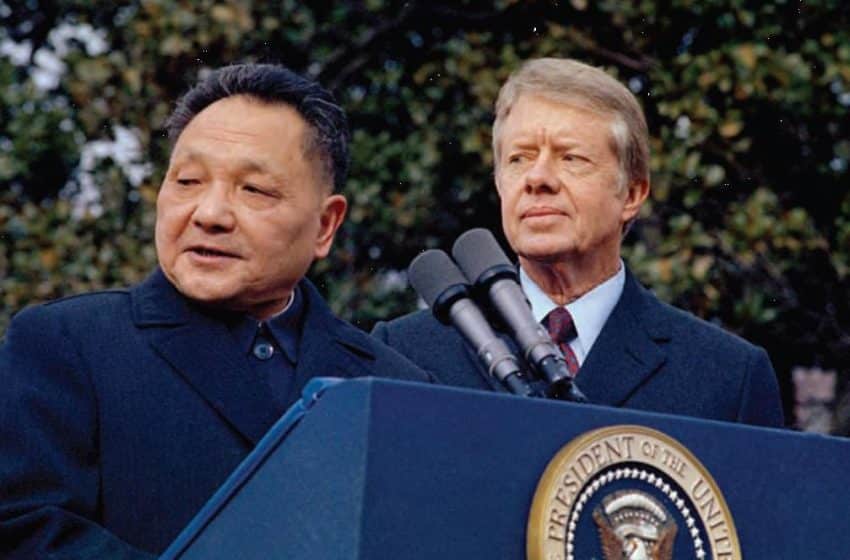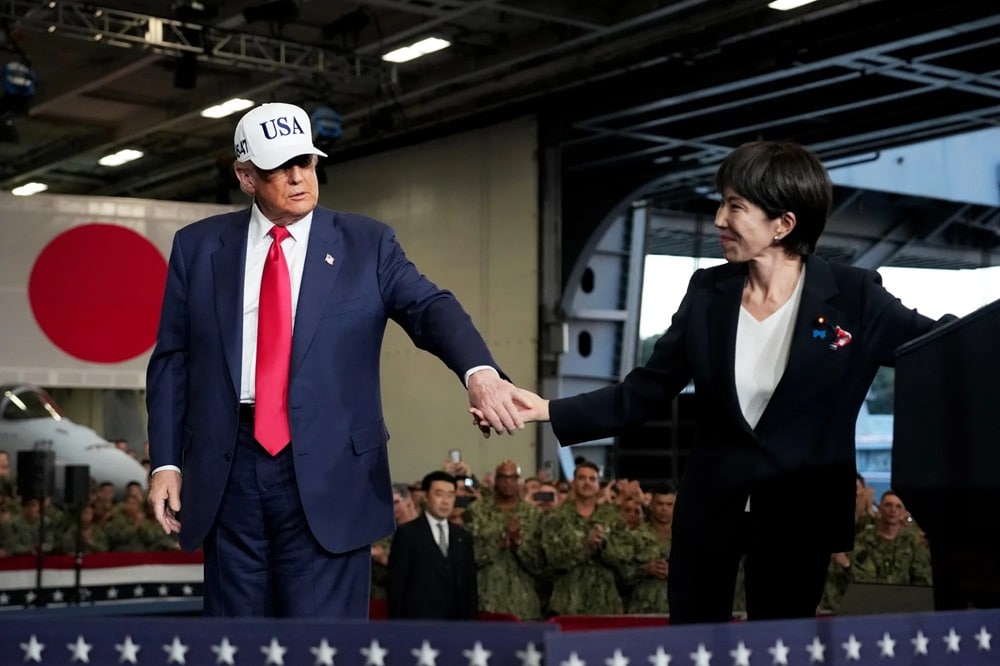China Bites Back on Trade
- Analysis
 Juan Zhang
Juan Zhang- 04/10/2025
- 0
One quick announcement:
China Focus is proud to be co-organizing Emerging Voices for U.S.-China Cooperation 2025, a conference event to be held this August in San Francisco with the Academy of Contemporary China and World Studies and the University of San Francisco. This is a next-gen event for early career NGO, policy, and academic workers within five years of their most recent degree. The theme this year is Peace in a Multipolar World. Now is a time to take big swings or get out of the way. If you are interested in joining us in promoting peace as the next global order, with all its threats and opportunities, takes shape, then please see the call for proposals here.
Thanks,
Nick

After years of media coverage and expert debate over a potential all-out trade war, the conflict between China and the United States has now fully erupted. On Tuesday, April 8, the Trump administration raised tariffs on Chinese goods to a rate of 104%. Just seven hours later, Beijing responded forcefully by announcing additional tariffs on some U.S. imports, totaling 84%, set to take effect at 12:00 p.m. ET on Wednesday. At the time of publication of this article, the Trump administration issued 90-day pause on countries that haven’t retaliated but raised China’s tariff to 125%. China has not yet issued a response.
Another significant move from Beijing on Tuesday was the release of a white paper titled “China’s Position on China-U.S. Economic and Trade Relations,” issued by the State Council press office. The main body of the 28,000-word document consists of six sections:
The essence of China-U.S. economic and trade relations is mutual benefit and win-win cooperation;
China has earnestly implemented the Phase One trade agreement;
The U.S. has violated obligations under the Phase One agreement;
China supports free trade and abides by WTO rules;
Unilateralism and protectionism harm the development of bilateral economic and trade relations;
China and the U.S. can resolve trade differences through equal dialogue and mutually beneficial cooperation.
The white paper states that since the China-U.S. trade friction began in 2018, the U.S. has imposed high tariffs on over $500 billion worth of Chinese goods and has continuously introduced measures to contain and suppress China. Therefore, “China had to take strong countermeasures to resolutely defend national interests.”
Interestingly, the white paper addresses the Trump administration’s core complaint—that China runs a large trade surplus with the U.S., causing significant losses for the US side – by arguing that the trade imbalance is a natural result of structural issues in the U.S. economy and the global division of labor based on comparative advantages. It notes that China’s current account surplus as a share of GDP has dropped from 9.9% in 2007 to 2.2% in 2024. “China does not deliberately pursue a trade surplus,” the white paper further states.
Here is my translation of one section of the paper.
China-U.S. economic and trade exchanges are roughly balanced in terms of benefits. To objectively understand and evaluate whether China-U.S. bilateral trade is balanced, a comprehensive and in-depth examination is required; one cannot only look at the goods trade imbalance. In the current era of deep economic globalization and widespread international production, the connotation of bilateral economic and trade relations has already gone beyond goods trade. Service trade and the local sales revenue of domestic enterprises' branches in the other country (i.e., local sales under two-way investment) should also be included. Taking into account goods trade, service trade, and local sales of domestic enterprises' branches in the other country, the economic and trade exchanges between China and the U.S. are roughly balanced in terms of benefits. According to data from the U.S. Department of Commerce, in 2023, the U.S. had a $26.57 billion service trade surplus with China, and the U.S. holds a significant advantage in service trade; in 2022, U.S.-funded enterprises had sales of $490.52 billion in China, far exceeding the $78.64 billion sales by Chinese-funded enterprises in the U.S., with a difference of $411.88 billion. U.S. companies’ advantage in multinational operations is even more prominent. The proportion of the U.S. trade deficit attributable to China has declined, while the global trade deficit has increased. According to data from the U.S. Bureau of Economic Analysis, China’s share of the U.S. goods trade deficit has declined for six consecutive years, from 47.5% in 2018 to 24.6% in 2024, while during the same period, the U.S. deficit with other countries and regions has increased significantly. In 2024, the U.S. goods trade deficit totaled $1.2 trillion, an increase of 13% year-on-year, and it has exceeded $1 trillion for four consecutive years. China’s foreign trade features large-scale imports and exports, and the same is true for China-U.S. trade. In many exports of processed manufactured goods, the value-added obtained by China accounts for only a small portion of the total value of the goods. However, the current trade statistics method calculates China's exports to the U.S. based on the total value (i.e., the full value of the exported goods). If calculated using the value-added method, the U.S. trade deficit with China would drop significantly. China has adopted multiple measures to actively expand imports. Actively expanding imports is China’s proactive responsibility as a major country and an important contribution to global economic development. Since November 2018, China has held the China International Import Expo (CIIE) in Shanghai every year. The number of participating countries and the intended transaction volume have increased year by year, with the total intended transaction volume exceeding $500 billion. In 2024, China’s total imports reached 18.4 trillion yuan, a year-on-year increase of 2.3%, setting a new record high. China has remained the world’s second-largest import market for 16 consecutive years.
With the latest news that Trump has paused his global tariffs—except those on China—it remains to be seen whether China can withstand all the pressure on its own.
According to a Bloomberg report on Wednesday, U.S. Treasury Secretary Scott Bessent stated at an event in Washington that the U.S. hopes to reach trade agreements with its allies and then jointly confront China. He pointed out that China remains the only country actively pursuing an escalation with the U.S.
Notably, in its latest white paper, China also signals a willingness to negotiate with the U.S. on trade issues. The white paper states: “China is willing to engage with the U.S. on key issues in economic and trade relations. Through equal dialogue and consultation, both sides can address their concerns and jointly promote the stable, healthy, and sustainable development of China-U.S. trade relations.”
Most economists would agree that both countries would suffer in an all-out trade war. In this high-stakes staring contest, the real question is: who will blink first—China or the U.S.?
Juan Zhang is a senior writer for the U.S.-China Perception Monitor and managing editor for 中美印象 (The Monitor’s Chinese language publication).
The views expressed in this article represent those of the author(s) and not those of The Carter Center.
Author
-

Juan Zhang is a senior writer for the U.S.-China Perception Monitor and managing editor for 中美印象 (The Monitor’s Chinese language publication).







